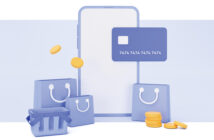While we all hope for the best, it’s important to be prepared for the worst. Unexpected events such as job loss, a medical emergency or car repairs can throw our finances off balance, leaving us scrambling for ways to cover the expenses. This is when an emergency fund comes in handy. In this article, we’ll discuss the importance of having an emergency fund and how to build one.
An emergency fund acts as a safety net, a stash of cash set aside to cover unforeseen expenses and help reduce financial stress. Emergency funds should be easily accessible and liquid, meaning you can withdraw the funds quickly without penalties or fees. Most people rely on a bank savings account or if they are looking for some higher interest, will consider a money market fund. Emergencies can happen to anyone at any time and without an emergency fund, you may have to rely on credit cards or loans, which could result in more debt and higher interest payments. According to the 2022 Bankrate® savings report, 36% of Americans have more credit card debt than emergency savings, which is the highest on record since 2011.* An emergency fund can help you avoid this, allowing you to cover expenses without going into debt. Knowing you have a safety net in place can also give you confidence.
The amount you need in your emergency fund depends on your individual circumstances. As a general rule, financial experts recommend having three to six months’ worth of living expenses. This means that if your expenses are $3,000 per month, you should have between $9,000 and $18,000 in your emergency fund. However, if you have dependents or a high-risk job, you may need to save more. Unfortunately, only 43% of all U.S. adults would pay for an emergency expense from their savings, according to Bankrate.com.**
Building an emergency fund requires discipline and consistency. Here are some steps to follow:
- Set a savings goal. Decide how much you want to save and set a realistic timeline. Start by saving a small amount each month and gradually increase the amount as you become more comfortable.
- Cut expenses. Look for ways to free up some cash to save. This could mean cutting back on eating out, canceling subscriptions you don’t use, or reducing your energy bills.
- Automate your savings. Set up automatic transfers from your checking account to your emergency fund. This will make it easier to save consistently and remove the temptation to spend the money elsewhere.
- Use windfalls. Whenever you receive unexpected income, such as a tax refund or a bonus, put it into your emergency fund.
- Keep it separate. Keep your emergency fund in an account separate from your checking account to avoid the temptation to dip into it for non-emergencies.
In conclusion, an emergency fund is important for financial stability and confidence. Remember, the key is discipline and consistency – start small, stay consistent and watch your emergency fund grow over time. By following these simple steps, you can be prepared for whatever the future holds.
*bankrate.com/banking/savings/emergency-
savings-report/
**bankrate.com/banking/savings/emergency-
savings-report/
Securities products and services made available through AE Financial Services, LLC (AEFS), member FINRA/SIPC. Investment advisory products and services made available through OLV Investments Group. 2839499-4/23














